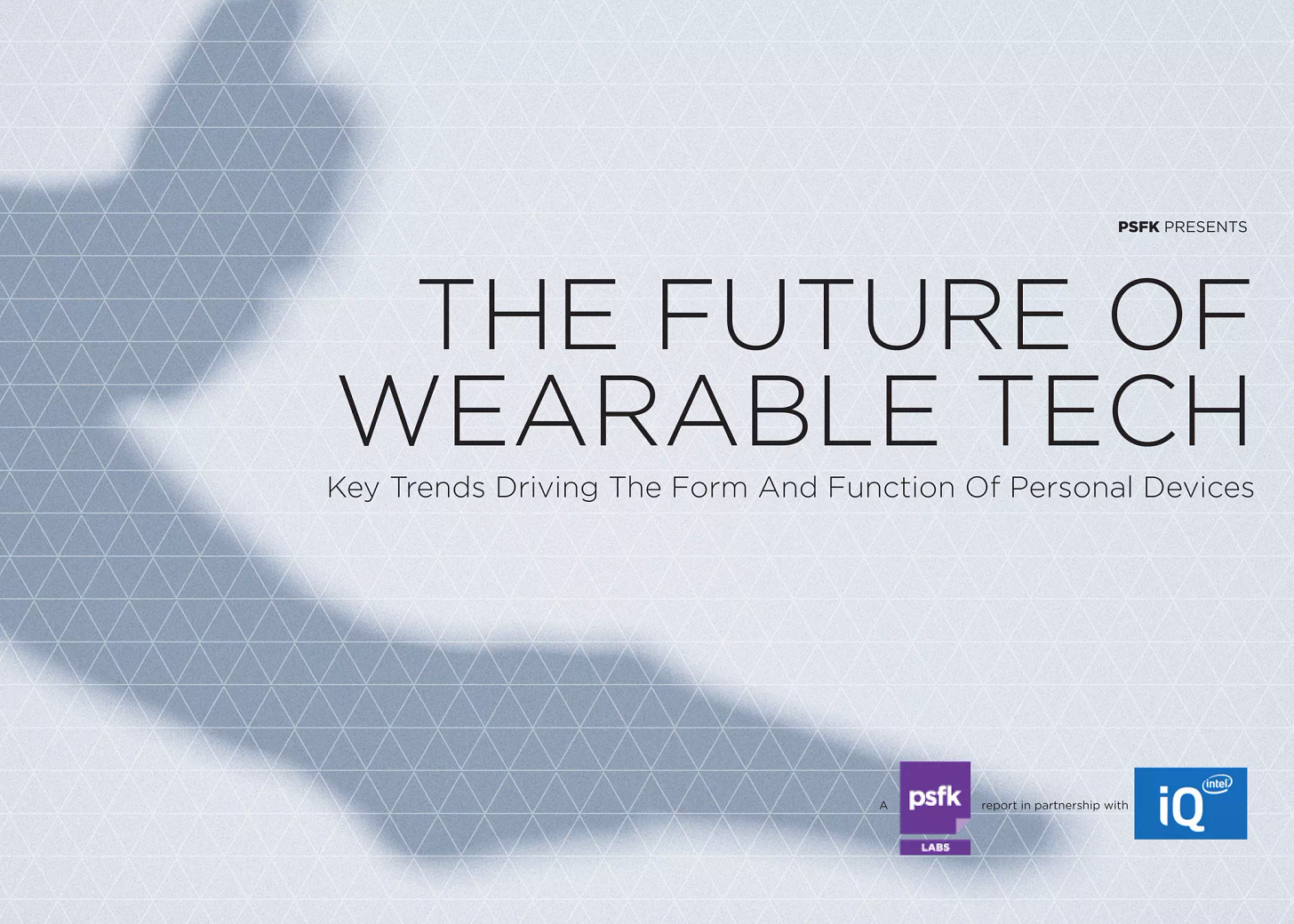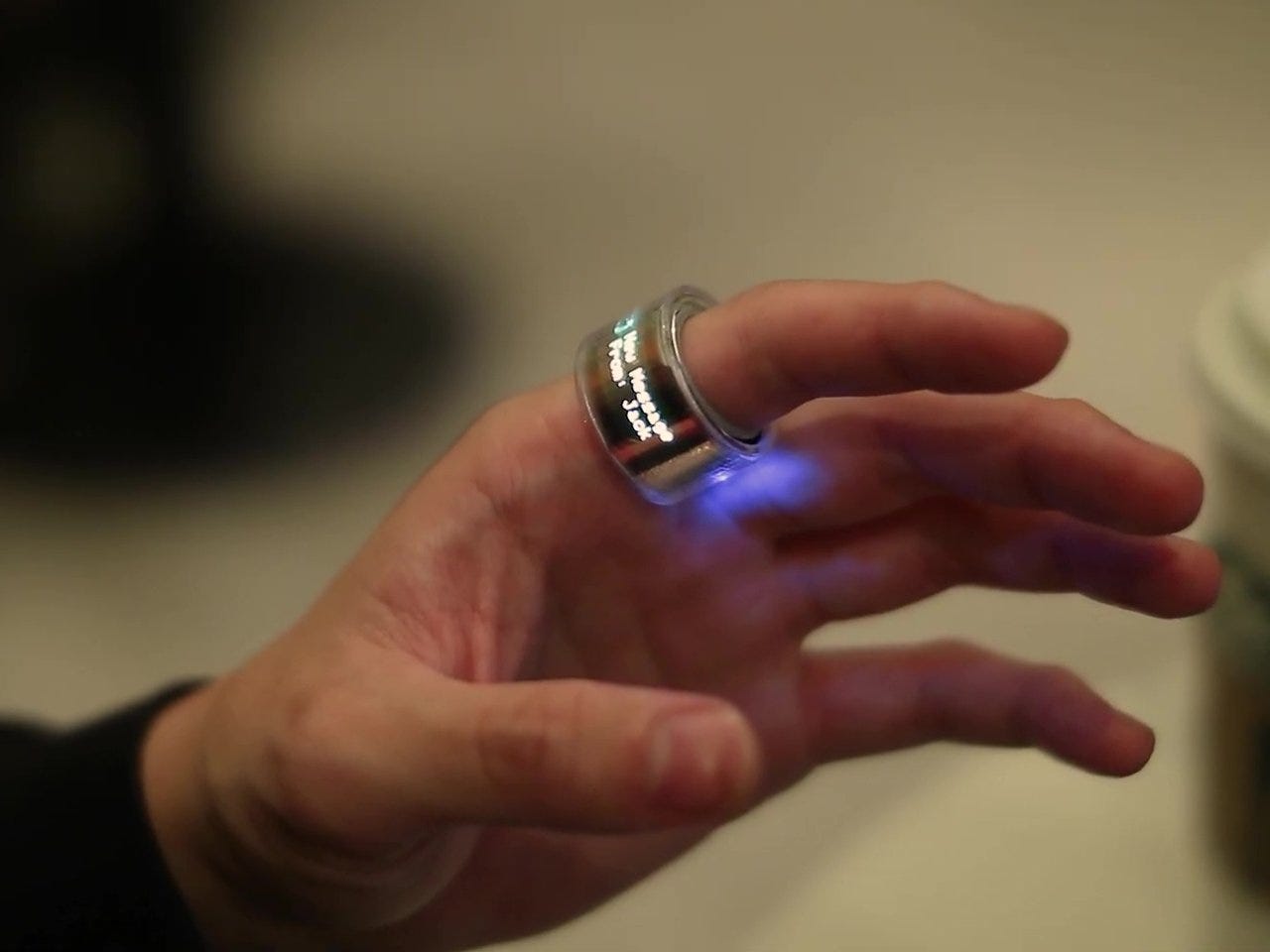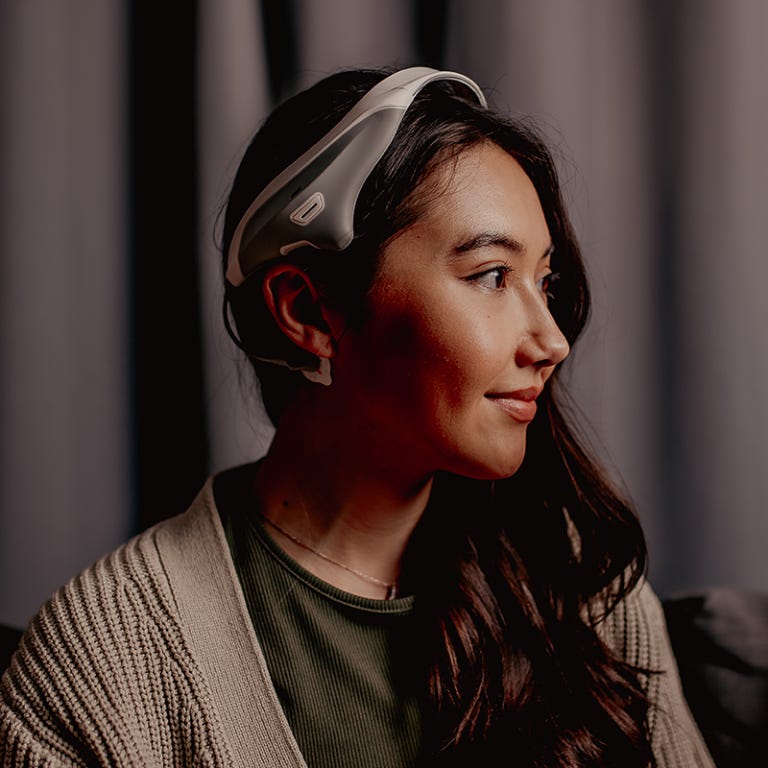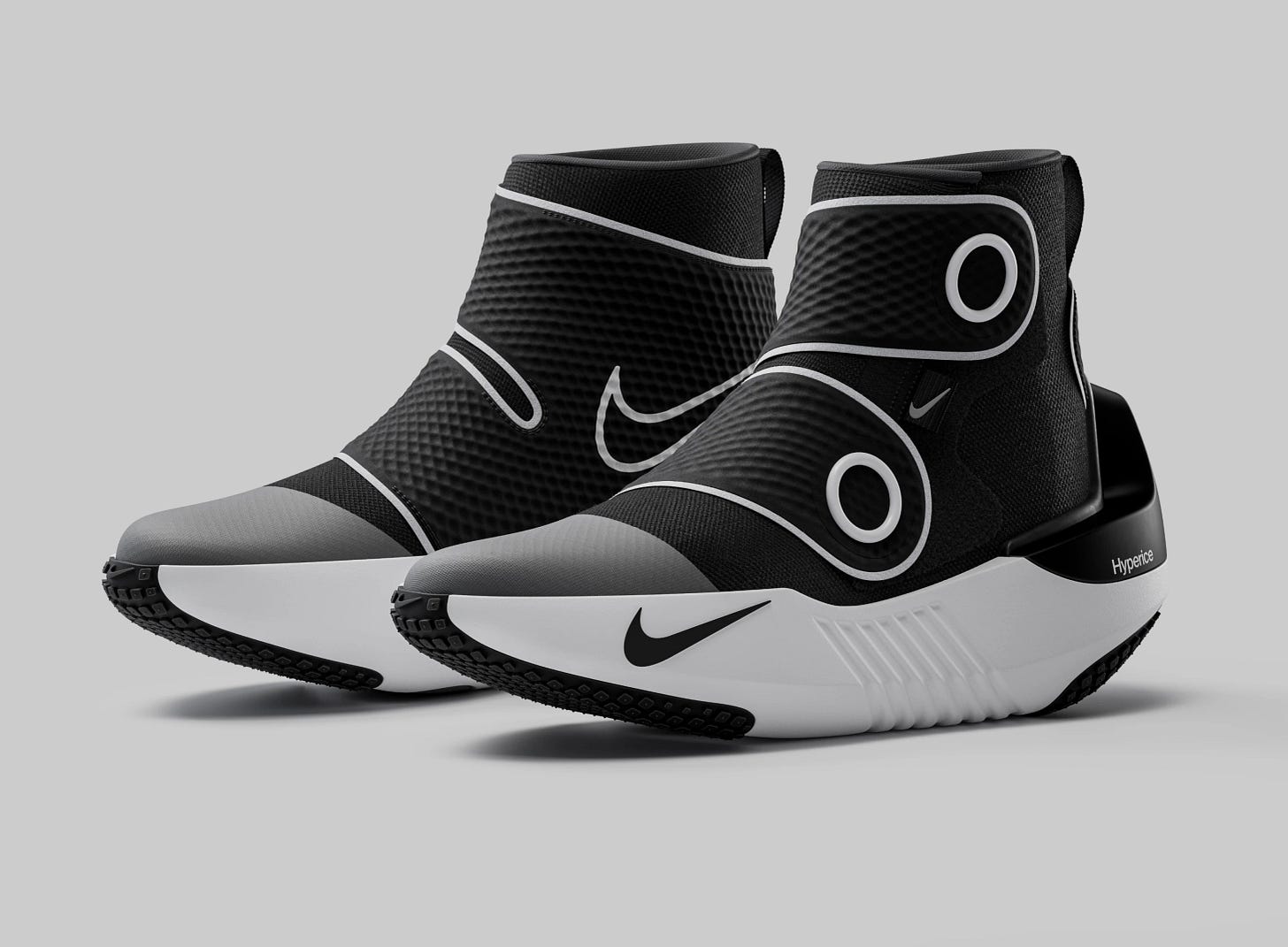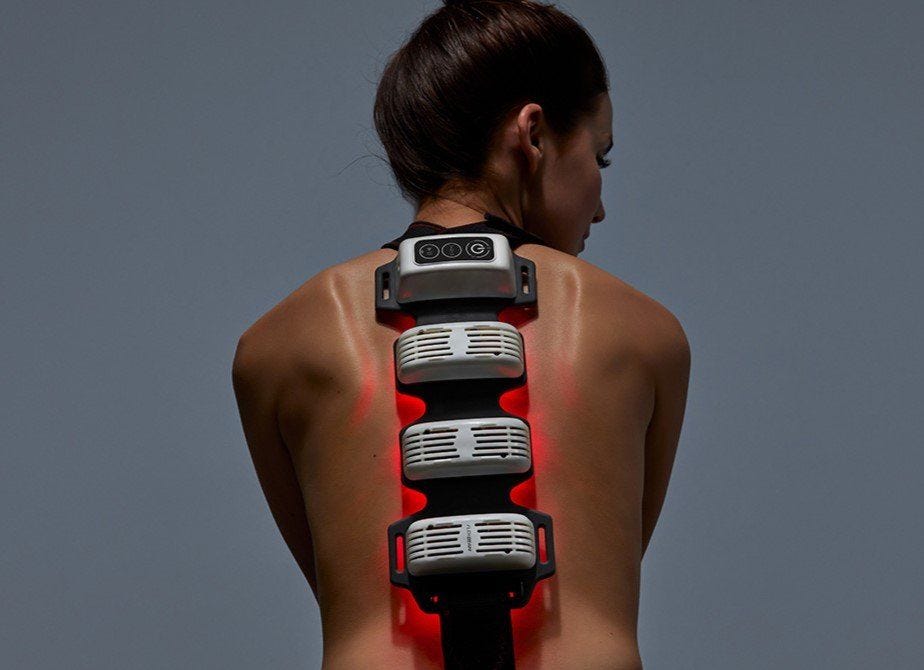Wearables + A Planetary Intelligence System
From metabolic rings to exosuits, wearables today converge into a human–machine feedback network. Tomorrow, the glue of a distributed intelligence system connecting bodies, environments, and machines?
A little over ten years ago, we created a report with Intel called The Future of Wearable Tech. A big PSFK team mapped the early signals shaping the category and helped companies imagine what might happen when technology moved closer to the body.
That study became a benchmark. It changed how B2B brands published thought leadership, how we ran our research practice, and how the tech industry thought about human–machine connection. Looking back, the energy around wearables in 2014 feels similar to today’s AI rush — a mix of experimentation, optimism, and belief that a new interface would change everything.
For this newsletter, instead of a human research team (which have long flown the nest), I used the AI-powered PSFK Graph to analyze how those early ideas compare with the trends surfacing today - and to see what’s evolved, what’s persisted, and where things might go in another 10 years.
Let’s look at wearable trends today…
BUT FIRST: A REMINDER - COME JOIN ME & EXPERTS AS WE PRESENT 2026 BIG IDEAS TOMORROW ON LINKEDIN AT 12.30PM ET - RSVP HERE
1. BODY DATA + CONTINUOUS INSIGHT
Smart Rings Diversify into Metabolic Insight and On-Device AI Input
Smart rings now drive roughly 75% of global fitness-tracker revenue and whether they are carbon, ceramic or metallic, these rings are morphing into multimodal health and interaction hubs that sense, coach, and communicate.
As sensors shrink and on-device AI grows, the ring is emerging as the an interactive wearable — a subtle hub for metabolic and emotional awareness. Rings to track:
Sandbar Stream Ring records whispered voice notes and replies in your own AI voice.
VisRing adds a wraparound OLED display for gesture control.
Ultrahuman Ring AIR® links HRV, sleep, and glucose into a unified metabolic stack used by pro cyclists.
Reebok Smart Ring merges jewelry design with medical-grade sensors.
Then → Now: In 2014, wearables like the Nymi heartbeat band and Oxitone Watch focused on identity and early health alerts. A decade later, those functions converge inside the ring: authentication, metabolic sensing, and emotional feedback in a single interface. The quantified self has become the responsive self—AI now interprets the data it once merely displayed.
Continuous Biomarker Wearables Expand into Coaching and Clinical Workflows
Wearable sensing is moving from wellness to healthcare infrastructure. The digital-biomarker market ($5B → $18.8B by 2030) shows that real-time, contextual health tracking is becoming a permanent layer of care. Biomarker to stick close to:
ECG247 provides certified real-time cardiac monitoring.
Nix Biosensors tracks sweat chemistry to guide hydration for athletes and field workers.
BioSens8 engineers microbe-based biosensors for non-invasive continuous tracking.
MIT ultrasound patch enables at-home breast-cancer screening.
Elkem SILBIONE™ LSR Select EC 70 introduces conductive, biocompatible silicone that makes next-gen sensors more durable and comfortable.
Then → Now: Where Data-Streamed Care once transmitted raw vitals (Pixie Diaper) today’s devices close the loop with insight and regulation. The sensor network has matured from an external monitor into a continuous diagnostic companion, fulfilling the prevention and precision-medicine vision forecast in 2014.
2. COGNITIVE & NEUROLOGICAL WEARABLES
Closed-Loop Neurotech for Sleep and Stress
EEG and biofeedback devices are moving from tracking to active modulation. As the EEG-headband market heads toward $1.5B by 2025, neurotech is becoming a daily self-regulation tool for sleep, focus, and stress. Front-of-mind examples in the PSFK Trend Graph:
Muse and BrainBit blend EEG and motion sensing for adaptive mindfulness.
BrainBit Callibri Sensors + NeuroFit PRO extend biofeedback to muscles and breathing for posture-based stress reduction.
Neurovalens develops FDA-cleared neurostimulation for insomnia and anxiety.
Elemind triggers deep sleep through acoustic stimulation.
Neurable MW75 Neuro LT folds brain-monitoring into premium headphones — a hint at how cognitive tech may merge with mainstream audio.
Then → Now: The early wearables detailed in the report’s Emotional Mirror section visualized mood with LEDs; modern neurotech manipulates it. EEG and acoustic stimulation replace color feedback, transforming emotional expression into emotional optimization. What began as aesthetic empathy now delivers measurable self-regulation.
3. HEADS-UP COMPUTING & INTERFACES
AI-First Head-Worn Computing for Task Guidance (Privacy-Forward, Camera-Optional)
Today, headsets are being reimagined for hands-free reasoning, not spectacle. The next interface is discreet, contextual, and human — guiding rather than broadcasting.
Amazon Smart Glasses overlay navigation and scanning for last-mile delivery.
Meta Ray-Ban Display and Meta × Oakley HSTN blend neural-gesture bands with lifestyle design.
Samsung Galaxy Glasses (Project Haean) bring XR to Android.
Alibaba Quark AI Glasses integrate payments, translation, and shopping.
Taya AI Necklace reframes voice capture as jewelry.
Friend AI Necklace sparked debate about privacy and AI companionship.
Then → Now: In 2014, On-Board Interface experiments like TapTap and Winky explored gesture and wink control. The same ambition - to make tech disappear into instinctive behavior - has re-emerged as discreet AI assistants built into glasses and jewelry. The interface has shifted from visible interaction to ambient cognition.
Retina-Grade Micro-Displays for XR
Micro-LED breakthroughs are making immersive computing truly wearable. Future Market Insights projects the wearable-display market > $235 B by 2035.
Vision itself is becoming the device.
IntraPhoton develops three-layer stacked LEDs for retina-density color.
Thunderbird X3 Pro and INMO AIR3 deliver award-winning AR glasses.
Xpanceo prototypes smart contact lenses with zoom, night vision, and biometrics.
Then → Now: The telescopic contact lens and Argus II prototypes we reported on hinted at sensory augmentation; a decade later, that line runs straight to Xpanceo and IntraPhoton. Vision tech has evolved from accessibility to embodied computing, where optics become the processing surface itself.
4. PERFORMANCE, RECOVERY & PHYSICAL AUGMENTATION
Exoskeletal Assist - Wearable Performance Hardware
Mechanical augmentation is moving from rehabilitation to recreation. The wearable-robotic exoskeleton market (growing to $9.9 B by 2029) signals how robotics is becoming an everyday mobility layer.
Nike Project Amplify merges motorized cuffs and footwear for assisted running.
Ascentiz Exo-Belt offsets 66 lb through modular hip and knee supports.
Hypershell X Ultra offers affordable endurance augmentation.
Toyota Walk Me Chair replaces wheels with robotic legs that climb stairs — translating exosuit logic into inclusive mobility.
Ekso Bionics continues bridging medical rehab and industrial use.
Then → Now: Your 2014 Bespoke Biotech section imagined 3D-printed prosthetics democratizing mobility. Those prototypes matured into exosuits and robotic chairs that amplify rather than restore. The assistive device has become an augmentation layer, blending rehabilitation, recreation, and design.
Thermoregulation Wearables for Muscle Relief & Circulatory Recovery
Thermoregulation wearables bring spa-grade cryo- and heat therapy to portable gear, letting athletes and workers manage circulation and muscle relief in motion. Heat and cooling therapies are being miniaturized into wearable formats that promote faster recovery.
Nike × Hyperice Hyperboot delivers targeted compression and heat to prime or relax muscles.
Eztia HydraVolt provides battery-free cooling for up to eight hours, used by military and construction workers to reduce heat strain and muscle fatigue.
Himo Cool Pad for Wigs extends surface-cooling design into everyday comfort wearables.
Then → Now: Early experiments like Wristify framed temperature as comfort and energy efficiency. Now heat and cooling are precision recovery tools, engineered for circulation and muscular therapy rather than environmental adjustment.
Red-Light & Energy-Based Recovery Wearables
Light and vibration are joining heat and compression in the recovery toolkit, targeting tissue at a cellular level. Photobiomodulation wearables translate lab-grade recovery into compact, design-led consumer tools — evidence of the convergence between sports science, beauty tech, and wellness.
FlexBeam uses red and near-infrared wavelengths to stimulate muscle repair and reduce inflammation.
TheraFace Mask Glo combines LED and vibration therapy for circulation and skin recovery.
Then → Now: Photobiomodulation wasn’t on the 2014 radar - its emergence marks the field’s expansion from mechanical to cellular recovery systems, linking sports medicine, wellness, and beauty into one therapeutic continuum.
5. ATHLETE MONITORING & COACHING ECOSYSTEMS
Coach-Grade Athlete Monitoring & Integrated Training Systems
Athlete tracking is blending elite analytics with everyday sport. With the sports-analytics market expected to quadruple by 2032, the athlete’s body has become a connected dataset — and coaching a live feedback loop.
Catapult Vector 8 monitors workload for 120 players simultaneously.
Theo Alpha Shorts embed sensors for 3D form analysis.
Evolve Mvmt detects fatigue and step quality from the ankle.
Garmin Edge 550 & Rally Pedals connect cycling power, nutrition, and route data.
Sports Impact Technologies measures concussion severity in real time.
Nix Biosensors returns here as the bridge between biomarker insight and performance coaching.
Then → Now: 2014’s Responsive Coaching used posture bands and sensor socks for feedback; today’s platforms fuse that logic with live analytics, AI coaching, and biomarker integration. The wearable coach has matured from a nudge engine into a networked mentor, closing the loop between physiology, data, and motivation.
2014-2025 - What Remained the Same
When I compared the original 2014 findings with what the PSFK Trend Graph surfaced, I found that many of the underlying questions remain unchanged:
– Human–machine symbiosis still frames the narrative — we’re still exploring how technology amplifies, mirrors, or replaces human capability.
– Ethical and emotional undercurrents — privacy, empathy, and data sovereignty — continue to define trust and adoption.
– Form-factor experimentation — from rings to textiles to implants — still drives invention at the edges of design.
The materials, sensors, and algorithms may be new, but the human story hasn’t moved as far as we think.
So What Next?
2036: Wearables as the tissue for a planetary intelligence system
Today’s signals reveal the emergence of the body as an operating system — a continuous interface where sensing, computation, and design combine to amplify what humans can sense, endure, and achieve. When I pushed the PSFK Graph to think further out, the system began to trace a more radical horizon. The forecast it generated isn’t a prediction so much as a thought experiment - a way to imagine where today’s signals could lead if they keep compounding.
By 2036, our model suggests that “wearables” may no longer exist as products at all, but as part of a distributed intelligence system connecting bodies, environments, and machines. It’s an extraordinary vision - and maybe a useful one. Because every time technology feels intimate again, from sensors to AI, we’re reminded how innovation starts: by trying to understand ourselves through our tools.
The PSFK Graph didn’t just show a future of devices; it revealed a future of relationships — between humans, systems, and the living world they’re both building.
Here’s the forecast for wearables in 2036:
Neural implants, exo-memory clouds, and bio-AI symbiosis mean perception and computation flow together. Human identity fragments across embodied and synthetic selves that operate in parallel. (yeah, whoa - Pluribus type stuff.)
Sensors evolve into a planetary nervous system. Your body’s chemistry is linked to atmospheric data, supply chains, and social emotion streams. Health, weather, and emotion are treated as a single continuous dataset.
The old privacy model collapses under continuous biometric disclosure. In its place: bio-sovereign states - jurisdictions and communities that define rights over data emitted by living bodies.
CRISPR-adjacent nanotech and adaptive exoskeletons accelerate real-time gene expression and muscular response. Species identity becomes fluid: cyborgs, bio-synthetics, and AI-guided organisms coexist. (In 10 years, I dunno but maybe glimpses of this).
AR lenses and neural projection make spatial computing omnipresent, but indistinguishable from perception. Physical and digital collapse into an unbroken sensory field. (Very Black Mirror)
People outsource survival to automation and focus on curating states of being. The wellness industry becomes a metaphysical infrastructure managing mind-states rather than body metrics.
Dreamy stuff… And you just wanted some ideas about what to get your partner for the Holidays!
Piers Fawkes - piers@psfk.com

